Tennessee is not only home to great musicians, but it’s also to some eye-catchy frogs too. A specific breed known as tree frogs is a craze nowadays in that area. In the ecosystem, they play a critical role despite not being big heavyweights. That alone should tell you how awesome they are.
With their amazing adaptability, most of them have stable population growth in Tennessee. If you are a native people of Tennessee, you must have heard them yelling from near or far.
You will be surprised to know that each one of them has unique attributes in terms of sound, habitat, diet, and skin color.
This short blog post provides a top-to-bottom overview of the Treefrog in Tennessee.
10 Cool Tree Frogs In Tennessee
We have a lot of things to learn from the tree frogs in the ecosystem in Tennessee. They are more than just bubbly, agile creatures.
In the following part, I will unfold all the new information to increase your knowledge of tree frogs…
Upland chorus frog
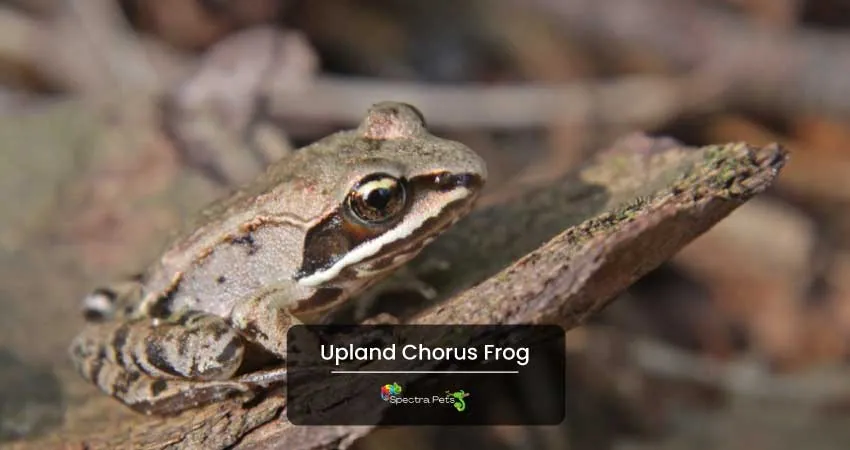
This species is one of the widespread tree frogs in Tennessee and the southeastern portion of the USA. The Upland chorus frog is also a small size frog that can grow from 0.7’’-1.5’’ only. You can easily tell the difference between a male & female of this species. The male has a large size vocal sac while females lack it.
Regarding habitats, these species choose to stay in moist areas like meadows, marshes, and ponds. The local people may find this frog roaming around in wetlands, bogs, and woodlands.
Moreover, their calling period begins in November and continues up to March. You will be surprised to know their calling is almost like someone running their fingernails on a plastic comb. The male frogs keep calling the female for breeding on the chosen site.
Since they are nocturnal, they are rarely seen during the day. They begin to search for small insects and spiders at night.
Color variation of the upland frog can be brown, grayish brown, reddish brown, and greenish brown. And the backside is designed with a dark stripe.
In terms of successful mating, this frog has a low rate with only 17.2%. One of the unique features of Upland chorus male is that some of them tend to interfere with the female before they reach to the soecific calling male.
Barking tree frog
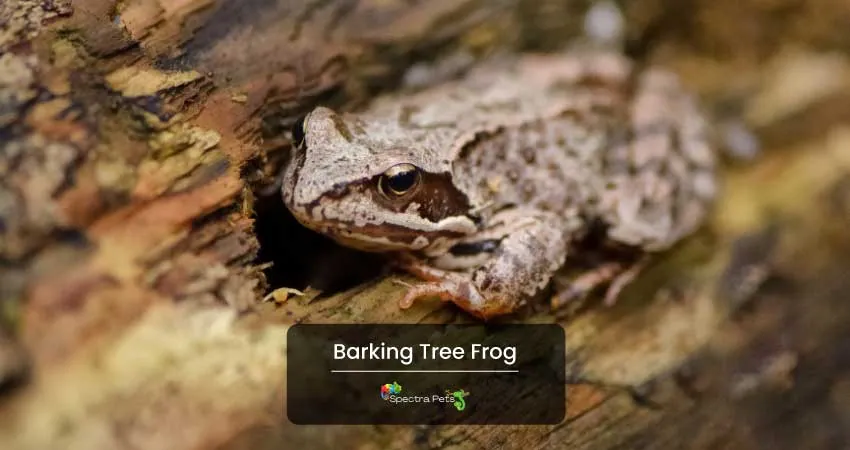
Being the largest tree frog in Tennessee, the barking tree frog has a size of around 2-2.8’’. Along with climbing high on the forest trees, they also enjoy being buried under the soil. These frogs are highly available in most of the southeastern part of the USA.
While most tree frogs call by staying on aquatic plants, these species call the female frog by floating on water. The favorite habitat of this frog are swamps, shallow ponds, wet woodland, and sandy areas.
In terms of adaptation, they have multiple advantages. They can change their skin color to resemble the surrounding color. Which works as camouflage and helps to avoid a predator. Moreover, their strong hind makes them outstanding climbers & swimmers.
Moreover, this frog is an endangered listed amphibian in Tennessee. The reason behind this is habitat loss to human intervention in their natural habitat.
Apart from the breeding season, the barking tree frog loves to spend a long time in the tree. Their calling sound almost resembles a dog barking, which is a toonk sound they produce after every few seconds.
These colorful buddies change their living height in the forest with the ups and downs of humidity & temperature. A high moisture level and a warm climate make them more likely to appear on trees. Whenever the weather becomes dry, they come down to the ground.
Speaking of skin color, it can be found in green, brown, and gray. And the round spot on their back is noticeable from a distance. Different types of small insects are their main diet.
The breeding season of the barking tree frog is the summer season. Though the female lays 1500-4000 eggs, few of the eggs can reach adulthood.
Gray tree frog
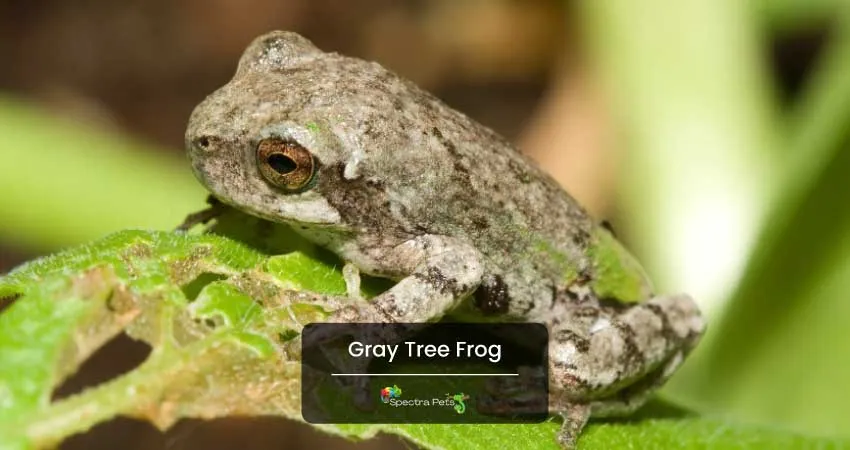
The gray tree frog is one of the well-known & widespread tree frogs in the eastern part of the USA which also includes Tennessee. This warty & moist skin frog is available in gray, brown, and green shades. The unique skin mark of this frog is a white spot below its eyes.
Compared to other tree frogs, their lifespan is high and close to 7 years. These frogs can change their color according to their habitat’s background and save themselves from the potential predator. While the male frog can be 1.25-2’’ long, the female can be 1.5-2.25’’ long.
Moreover, they take enough rest in the daytime on the tree leaves and branches. As soon as the night starts, they also get busy hunting for their food. The Diet of these frogs includes slugs, snails, mites, ants and spiders, etc.
Plus, their habitat range is broad. They can be living in swamps, woodland, forest, ponds, and backyards. You can experience calling these frogs in May-August and their calling sound is a slow but fluty call.
Furthermore, this species will be roaming around 20m high on trees, making them less exposed to predators. Every breeding season the female can lay up to 1000-2000 eggs which keeps the population of this frog balanced in the ecosystem.
Mountain chorus frog
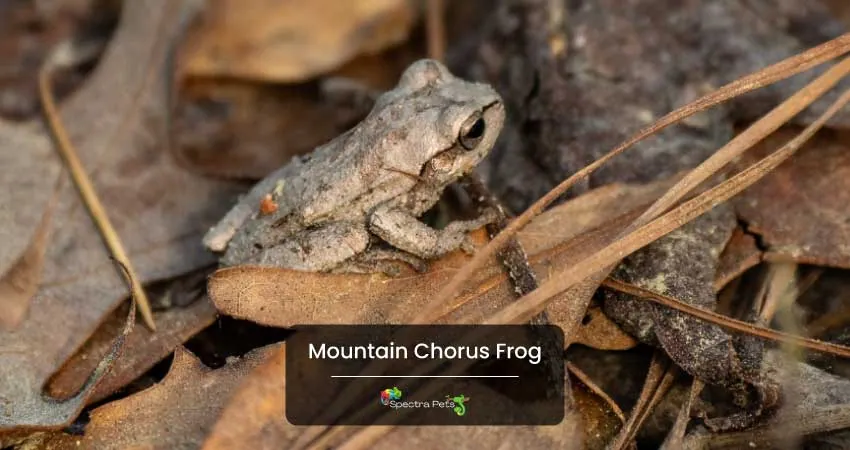
The Mountain chorus frog is a common frog in Tennessee. These frogs are blessed with a long lifespan of around 4-5 years in their natural habitat. Since they are small, they are frequently killed by higher-level predators, but their population level is still high.
The local people of this area might hear them calling from April- late May. This timeframe is their breeding period and males will call females from the slow streams, shallow water pools close to woods, roadside ditches, and plowed fields.
Moreover, their desirable place is shallow wetlands like marshes and swamps. Due to their ability to change color and put on camouflage, they can smoothly hide from predators. The frog always hangs out where there’s a lot of vegetation. Except for mating season, they’re hard to find.
The Diet of these small creatures includes insects like crickets, moths, etc. They also love eating centipedes, flies, and larvae. Regarding size, the female mountain chorus frog is bigger and this species can get up to 1-1.25’’ long.
You can clearly tell the difference between males and females by observing the color of the throat. Female frogs have lighter colors on their throats, while males have darker colors.
Plus, the smooth & shiny skin can be seen in gray, brown, white, and olive colors. Their level in the food chain makes them a favorite meal for different animals like raccoons, birds, and snakes.
During the breeding time, the male attracts the female frog by generating a harsh, fast, and raspy sound that lasts around 20 seconds.
Bird-voiced tree frog
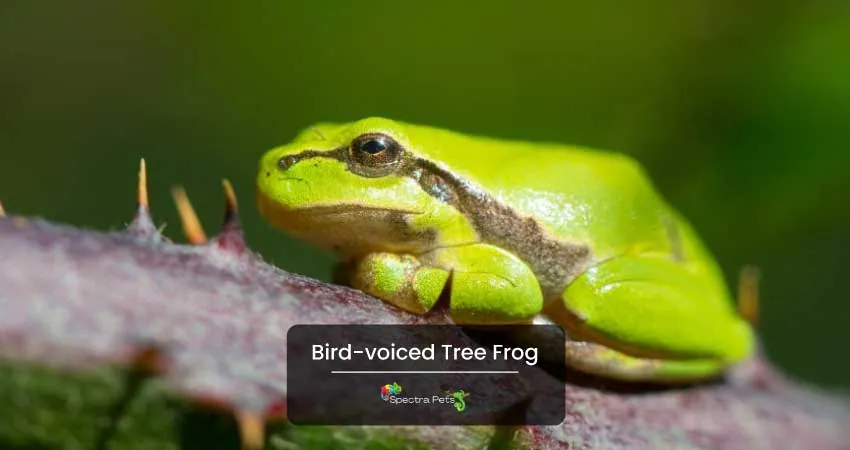
Bird-voiced tree frogs are well known for their calling tune which almost resembles the sound of a bird chirping. Once the frog starts calling, it will keep the ringing sound repeatedly for 20 times or even more.
This opportunistic tree frog hunts during the night time and its diet consists of small invertebrates, spiders, ants, flies, and some tree-dwelling insects.
In Tennessee, the bird voice treefrog is a common species that has a stable population level. This species lives pretty high on the tree and stays on the forest floor close to the water when breeding season appears.
Moreover, their favorite breeding site is mostly shallow pools. Apart from that, their favorite is wooden swamps, large creeks, flooded vegetation, etc.
You can easily hear them calling from these areas during April- August as it’s the breeding time of these amazing frogs. Compared to other tree frogs, it has a long lifespan of 4 years in the wild.
Plus, the combination of their padded & webbed toes makes them excellent climbers. The color of this frog can vary from green to brown or even gray. On their warty skin, you can notice marks or spots.
The most prominent feature of this frog is its bulging eyes. In terms of adaptation, the bird-voiced tree frog can change its color and blend in the background color to deceive its predator.
When it comes to size, the males are smaller than the female. And the size can vary from 1’’ up to 1.75’’. Though they live a solitary life in the breeding season, you may notice many of them in one single shallow pool.
Northern cricket frog
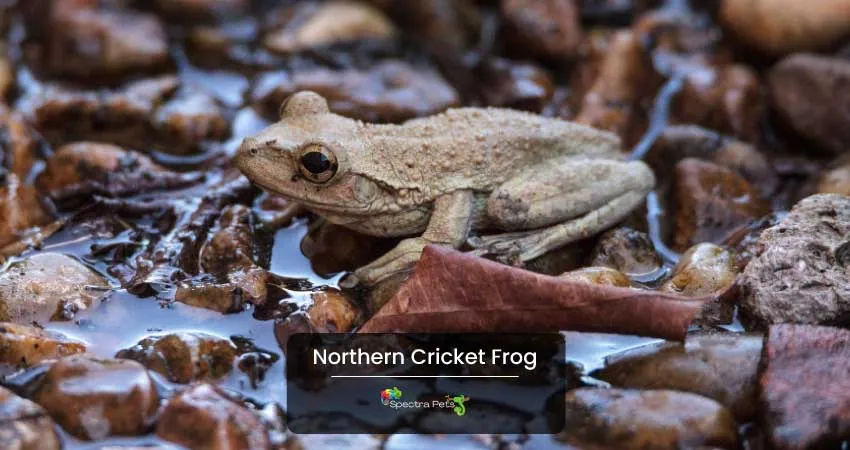
You can easily detect a northern cricket frog by its warty skin and the triangle mark between the two eyes.
These small frogs are native to Tennessee and they are widely available. Northern cricket is one of the tiny size frogs in this state. By nature, they are not arboreal and spend most of their time on forest floors or ground. However, they can jump 3 feet at one attempt and easily run away from any predator.
Moreover, the long hind leg helps them immensely in swimming. Regarding size, these frogs can grow 0.5-1.5’’ in size. They become sexually mature before 1 year and start breeding in May & continue up to August.
Regarding skin color, this species can be green, brown, yellow, and gray. On many of these frogs, you might notice brown or orange stripes on their back. When it comes to diet, the Northern cricket frog enjoys mosquitos, beetles, flies, etc in their natural habitat. Unlike other tree frogs, the Northern cricket frog remains highly active during day time.
Furthermore, the average lifespan of this species is only 1 year but still, their population growth is pretty stable.
Green tree frog
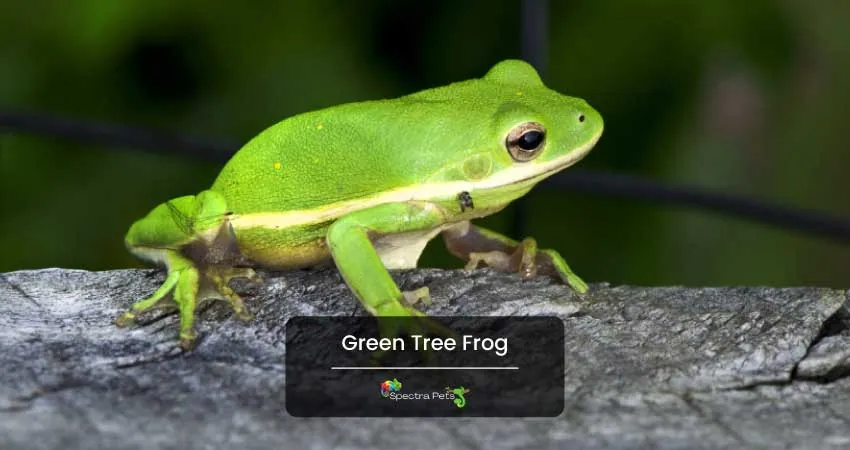
Green tree frogs are largely available in the southern & central parts of Tennessee. The smooth skin tree frog can grow from 1″ up to 2.5″. Like many other frogs, the female green tree frog is the bigger one.
Due to their natural habitats’ closeness to human settlement, the native people of Tennessee sometimes find this small guy right in their backyard or even in their garden pond. These tiny frogs breed in Summer & Spring. Shallow water bodies are their preferable breeding site where the male invites the female by calling. After mating, the female lays eggs that become froglets within the next 2.5 months.
Moreover, their loud nasal hoonk can be easily heard from April to September. This frog can repeat their calling sound up to 75 times in a single minute.
When it comes to lifespan, this colorful tree frog has an average life of 2-5 years in its natural habitat. While in captivity, they can survive up to 10 years.
Green tree frogs love hiding in the daytime under shady vegetation that’s close to water. While they start to move a lot at night time to hunt their favorite insects.
The color is mostly dark green with a white stripe on the side of their body. Snakes & birds are the main predator of these frogs in their habitat.
Southern cricket frog
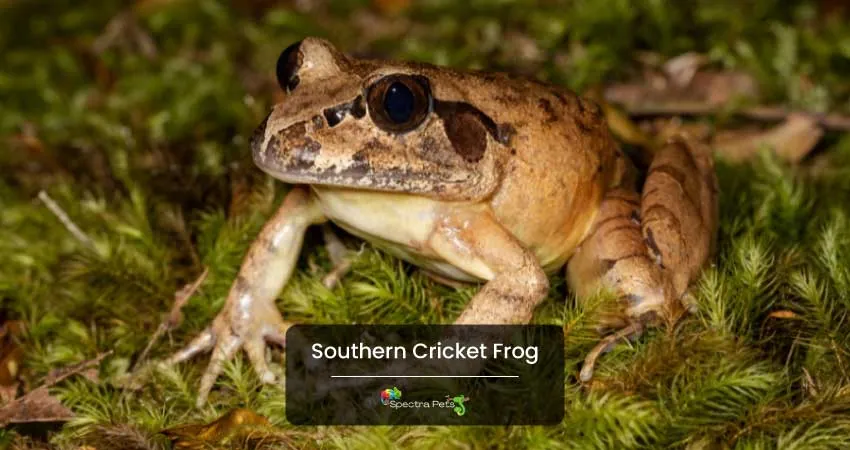
The southern cricket frog-like to stay in an ultra-moist zone that has a good amount of vegetation. You can see these frogs in varieties of colors which include reddish brown, gray, black, olive green, and brown. Their backside has orange or brown color stripped.
One of the unique skin marks is the triangular mark on their head. Along with Tennessee, these species live in most of the southeastern area of the USA. These frogs are tiny in size around 0.5-1.25’’. Unfortunately, they have a short average lifespan of only 4 months.
You will be shocked to know the southern cricket frog can jump about 8 feet high which helps them to run away from predators. However, they can’t climb on trees as they don’t have any toe pads. Their ability to change the dorsal color gives them a high advantage for surviving in the wild.
Moreover, the male produces a sound that grabs the attention of the female while giving another male to go away from their breeding spot. In terms of sound, this species produces a harsh sound that is similar to two Peebles clicking against each other. They will make the sound from February to October.
Right after they reach maturity, they go for breeding and the females produce around 150 eggs at one time. Their favorite habitat is temporary pools, high-vegetation ponds, creeks, and roadside ditches.
People who live in the southwestern part of this state may encounter this warty-skin amphibian in their backyard. Their food menu is made mostly of small insects and mosquitos.
Spring peeper frog
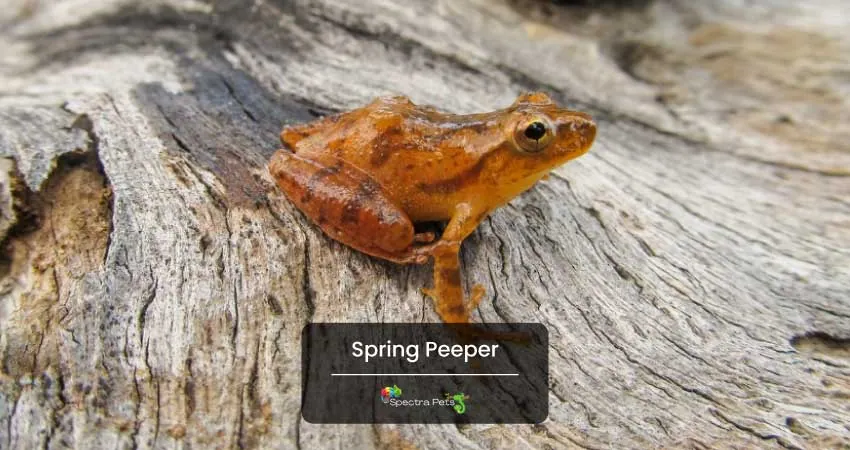
Like other parts of the USA, the spring peeper is the least concerned amphibian in Tennessee. They live mostly in wooded areas that are close to temporary water bodies. This frog is found in multiple colors like reddish, tan, or brown. They also have dark spots on the back.
The lifespan of this species is around 3-4 years in the wild. The size is very small & the range can be 0.98-1.5’’. They don’t like roaming around in daylight and take a rest by hiding under shrubs and trees. Right after the evening, they start looking for small insects.
It’s easy to tell the difference between a male spring peeper and a female one. The females are bigger & have a lighter skin color. While the male is small in size and has darker shades.
Moreover, the breeding period starts in early April and lasts till June. The female lays around 750-1200 eggs on aquatic plants. The diet of juvenile & adult spring peepers consists of spiders, beetles, flies, and other small insects.
With their amazing hibernation ability, the spring peeper can easily pass a harsh freezing winter. They have a record of surviving up to -8 degrees Celsius temperature. They like to spend their winter sheltering under the bark of trees or large tree logs.
Cope’s gray tree frog
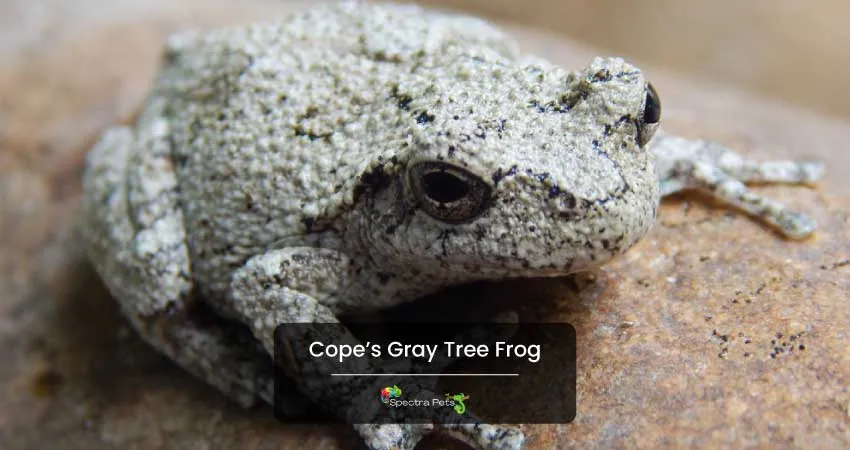
It’s hard to tell the difference between Cope’s gray tree frog & a gray tree frog due to their extreme similarity. This cute amphibian lives mostly in prairies, woodland, flooded fields, and swamps.
The skin color of this frog may be gray-green, pearl gray, and brown & green, etc. They can alter their skin shades to darker shades whenever the temperature falls. In terms of lifespan, this species has an average of around 2.5 years. The maximum lifespan was recorded as up to 7 years in the wild.
Due to their arboreal nature, they stay a long time on trees and look for food on tree leaves and branches. These amphibians are excellent climbers. The size of this species can be 1.25-2’’ long which makes it a big one among all the members of Hylidae.
Along with Tennessee, these are also found in Florida, Texas, and some parts of Canada. Their hibernation ability helps them to survive the chilled winter without any problem.
For breeding purposes, the male species go to the wetland and call for the female to breed. The breeding time of Cope’s gray tree frog is from March-August. Around 2.5 months after the mating process lots of froglets spread out in their natural habitat.
They enjoy a wide range of insects that includes snails, spiders, plant lice, and moths. They can call even without their breeding time.
Final words
Learning about frogs is a flawless thing for amphibian lovers. I hope this short blog post was able to satisfy your thirst for tree frogs in Tennessee.
Whether you are a college kid or a full-time professional, this information will make you more aware of yourself as a neighbor whom you previously knew less about. Every time you cross any swamp area take a look at this tiny buddy.
Tree Frogs Found in the Nearby States of Tennessee:
